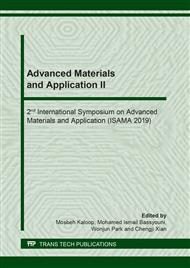[8]
Previous studies showed that leaf thickness of several plant species decreased when plants were grown under low broad-spectrum [15] or blue light levels [16]. Conclusion Red LED light is effective for root growth. Blue and red LED may be used as an alternative light source for upland cotton culture systems. This is the first report on measuring the effects of LED light on upland cotton in vitro, to determine what types are important for upland cotton growth. Using LED-based light sources, it is possible to regulate and control the physiological aspects of plant growth, such as photosynthesis and/or photo-morphogenesis. A continuous acquisition of new concepts and knowledge in the photobiology and morphogenesis, complemented with the rapid development of LED technology, may make the application of solid state lighting more remunerative in in vitro plant propagation Acknowledgement This research is funded by Ho Chi Minh City University of Technology-VNU-HCM under grant number T-KHUD-2018-23. Refercence.
Google Scholar
[1]
C. S. Brown, A. C. Schuerger, J. C. Sager, Growth and photomorphogenesis of pepper under red light-emitting diodes with supplemental blue or far-red lighting. J. Am. Soc. Hortic. Sci. 120 (1995) 808–813.
DOI: 10.21273/jashs.120.5.808
Google Scholar
[2]
M. E. Hoenecke, R. J. Bula, and T. W. Tibbitts, Importance of blue, photon levels for lettuce seedlings grown under red-lightemitting diodes. HortScience, 27 (1992) 427–430.
DOI: 10.21273/hortsci.27.5.427
Google Scholar
[3]
K. M. Folta, L. L. Koss, R. McMorrow, H. H. Kim, J. D. Kenitz, R. Wheeler, J. C. Sager, Design and fabrication of adjustable red-green-blue LED light arrays for plant research. BMC Plant Biol, 5(1) (2005) 17.
DOI: 10.1186/1471-2229-5-17
Google Scholar
[4]
R. J. Bula, R. C. Morrow, T. W. Tibbitts, D. J. Barta, R. W. Ingnatius, T. S. Martin, Light-emitting diodes as a radiation source for plants. HortScience, 26 (1991) 203-205.
DOI: 10.21273/hortsci.26.2.203
Google Scholar
[5]
D. T. Nhut, B. N. Nguyen, Light emitting diodes (LEDs): an artificial lighting source for biological studies. In: Proceedings of the 3rd international conference of the development of BME in Vietnam, 2010, pp.11-14.
DOI: 10.1007/978-3-642-12020-6_33
Google Scholar
[6]
N. Yeh, J. P. Chung, High-brightness LEDs-energy efficient lighting sources and their potential in indoor plant cultivation. Renew. Sust. Energy Rev. 13 (2009) 2175–2180.
DOI: 10.1016/j.rser.2009.01.027
Google Scholar
[7]
W. R. Briggs, M. A. Olney, Photoreceptors in plant photomorphogenesis to date, five photochromes, two cryptochrome, one phototropin and one superchrome. Plant Physiol. 125 (2001) 85-88.
DOI: 10.1104/pp.125.1.85
Google Scholar
[8]
A. Kurilcik, et al., In vitro culture of Chrysanthemum plantlets using light emitting diodes. Cent. Eur. J. Biol. 3 (2008) 161-167.
Google Scholar
[9]
S. D. Gupta, B. Jatothu, Fundamentals and applications of light-emitting diodes (LEDs) in in vitro plant growth and morphogenesis. Plant Biotechnol. Rep. 7 (2013) 211-220.
DOI: 10.1007/s11816-013-0277-0
Google Scholar
[10]
C. S. Brown, A. C. Schuerger, J. C. Sager, Growth and Photomorphogenesis of Pepper Plants under Red Light-emitting Diodes with Supplemental Blue or Far-red Lighting. J. Am.. Soc. Hort. Sci. 120(5) (1995) 808-813.
DOI: 10.21273/jashs.120.5.808
Google Scholar
[11]
M. I. Al-Daej, Line×Tester Analysis of Heterosis and Combining Ability in Tomato (Lycopersicon esculentum Mill.) Fruit Quality Traits. Pakistan J. Biolog. Sci. 21(5) (2018) 224-231.
DOI: 10.3923/pjbs.2018.224.231
Google Scholar
[12]
R. K. Singh, V. K. Singh, Heterosis breeding in tomato (Lycopersicon esculentum Mill. Ann. Agric. Res, 14 (1993) 416-420.
Google Scholar
[13]
D. A. Maclennan, B. P. Turner, J. T. Dolan, M. G. Ury, P. Gustafson, Effcient, full-spectrum, long-lived, non-toxic microwave lamp for plant growth. In: International Lighting in Controlled Environments Workshop, Tibbitts T. W. (Ed), 1994, pp.243-254.
Google Scholar
[14]
S. Nakamura, S. J. Pearton G. Fasol, The blue laser diode: the complete story. 2000, Springer: Dordrecht.
Google Scholar
[15]
D. A. Sims, R. W. Pearcy, Response of leaf anatomy and photosynthetic capacity in Alocasia macrorrhiza (Araceae) to a transfer from low to high light. Am. J. Bot. 79 (1992) 449–455.
DOI: 10.1002/j.1537-2197.1992.tb14573.x
Google Scholar
[16]
A. Saebo, T. Krekling, M. Appelgren, Light quality affects photosynthesis and leaf anatomy of birch plantlets in vitro. Plant Cell Tissue Org. Cult. 41 (1995) 177–185.
DOI: 10.1007/bf00051588
Google Scholar


